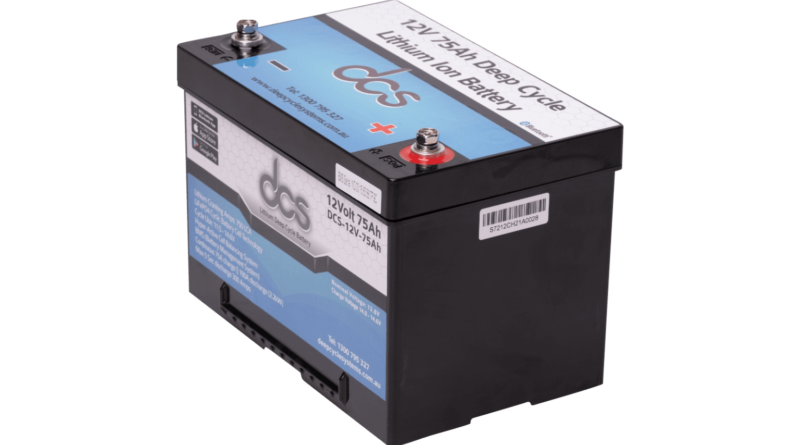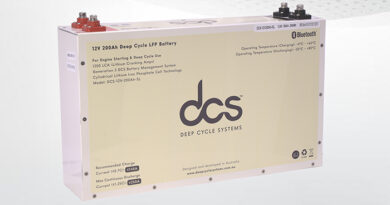LiFePO4 200 Ah: The Future of Reliable Power Sources
Searching for efficient and long-lasting energy solutions has become more crucial in a world where reliable power sources are essential for daily life. This is where Lifepo4 200 Ah batteries come into play. These innovative lithium-ion batteries are taking the market by storm with their high energy density and impressive lifespan. With a capacity of 200-ah, these batteries significantly improve over traditional lead-acid batteries, providing longer-lasting and more reliable power for a wide range of applications. Let’s delve deeper into the features and benefits of LiFePO4 200 Ah batteries and explore why they are the future of dependable power sources.
Daftar Isi
An Introduction to LiFePO4 Technology
LiFePO4 stands for lithium iron phosphate, the chemistry behind one of today’s most reliable lithium-ion batteries. This technology is characterised by its remarkable energy density and substantial cycle life, which set it apart from conventional lithium-ion batteries.
- What makes LiFePO4 batteries particularly appealing is their thermal stability, which significantly reduces the risk of thermal runaway—a common concern in many lithium-based batteries.
- This inherent safety attribute positions them as a preferred choice in many applications where safety cannot be compromised, such as electric vehicles and solar power storage solutions.
- LiFePO4 batteries owe their resilience and longevity to the robustness of the lithium iron phosphate cathode, which unlike the materials used in other lithium-ion batteries, does not break down under the stress of constant charging and discharging cycles.
- This stability ensures that the batteries do not easily degrade over time, preserving their capacity and efficiency for longer periods.
- A further advantage of LiFePO4 technology is its environmental friendliness. Compared to other battery types, they offer a greener alternative due to the non-toxic nature of the materials, making them less hazardous and easier to recycle.
Given these characteristics, LiFePO4 technology represents a significant leap forward in battery science. It offers a blend of safety, durability, and eco-consciousness that aligns with the future needs of both consumer and industrial battery use.
The Capacity Explained: What Does 200 Ah Mean?
Understanding the capacity of a Lifepo4 12-v 200-ah battery is essential to comprehending its capability as a power source. The «Ah» or ampere-hour rating of a battery indicates the electrical charge it can hold, effectively quantifying how long a battery can deliver a certain amount of current.
For a Lifepo4 12-v 200-ah battery, the «200 Ah» signifies that it can provide 200 amperes of current for one hour under ideal conditions. Alternatively, this could also mean delivering 1 ampere of current for 200 hours or any other combination that equates to 200 ampere-hours.
It’s crucial to remember, however, that real-world conditions like system inefficiencies, the battery’s state of charge, and temperature can affect the actual output. Therefore, while the «200 Ah» rating serves as a valuable benchmark for understanding the battery’s capacity, the practical runtime will depend on specific operational conditions and demands placed on the battery.
Benefits of Choosing a Lifepo4 12v 200ah Battery
Opting for a Lifepo4 12v 200ah battery presents many advantages over conventional battery types. These batteries stand out for their unparalleled cycle life, often exceeding 2000 cycles, which indicates their ability to last significantly longer than their counterparts. This longevity translates into substantial cost savings over time, as the need for frequent replacements is dramatically reduced.
Furthermore, the compactness and light weight of LiFePO4 batteries are particularly beneficial in applications where space efficiency and reducing overall weight are paramount. This makes them an ideal choice for portable energy solutions, mobile applications, and any scenario where the ease of installation and transportation is a key consideration.
Another critical advantage of LiFePO4 batteries is their high energy density, which allows for the storage and delivery of more power in a smaller package. This characteristic is essential for high-demand applications, providing sustained power supply without the bulk associated with other types of batteries.
Additionally, the eco-friendliness of LiFePO4 batteries is an aspect not to be overlooked. Their construction utilises materials that are less harmful to the environment, contributing to a reduction in pollution and facilitating easier recycling processes. In an era where environmental consciousness is increasingly important, choosing a greener battery solution is both a practical and ethical decision.
Moreover, the inherent safety features of LiFePO4 batteries, including their resistance to overheating and stable chemical composition, offer users peace of mind. This safety aspect is particularly crucial in applications where battery failure or malfunction could have serious consequences, ensuring that the Lifepo4 12-v 200-ah battery is a reliable and safe power source.
Lifespan and Durability: What to Expect
The endurance and robustness of LiFePO4 batteries, particularly the 12v 200-ah variant, are unparalleled. They offer an extended service life that is a boon for users seeking a dependable energy solution. The chemical composition of lithium iron phosphate lends these batteries a superior resilience, which is evident in their ability to withstand numerous charging and discharging cycles without significant loss in performance. A hallmark of their durability is the capability to endure upwards of 2000 cycles with minimal capacity degradation. This feat underscores their reliability and enhances their cost-effectiveness over time.
The design of LiFePO4 batteries inherently minimises the risk of common issues such as overheating, thus bolstering their lifespan further. Their operational stability in a broad spectrum of environmental conditions adds another layer of durability, ensuring consistent performance even when subjected to the rigours of daily use.
Their sustained operational viability without significant efficiency losses positions Lifepo4 12-v 200-ah batteries as a premier choice for many applications. From powering sophisticated electric vehicles to ensuring the smooth running of off-grid solar installations, their long lifespan and robustness deliver peace of mind and tangible long-term value to users, cementing their status as a cornerstone of modern, reliable energy storage solutions.
Charging and Maintenance Tips for Optimal Performance
Maintaining and correctly charging your Lifepo4 12-v 200-ah battery is vital for maximising its service life and performance. Use a charger that matches the specific requirements of LiFePO4 technology to ensure efficiency and safety. Such chargers are adept at managing the unique charging curve of these batteries, preventing overcharging which can significantly reduce the battery’s lifespan.
It is paramount to avoid exposing the battery to extreme temperature conditions. Although LiFePO4 batteries boast considerable thermal stability, prolonged exposure to temperatures outside the range of -20°C to 60°C can detrimentally affect their performance and longevity. Store and operate the battery within these thermal bounds whenever possible.
Regular visual inspections can help identify potential issues before they escalate. Check for physical damage or corrosion signs and ensure the battery terminals are clean and secure. Such simple checks can prevent performance degradation and extend the battery’s useful life.
Balancing the battery cells periodically is also beneficial. This process ensures that all cells within the battery operate uniformly, enhancing the overall efficiency and lifespan. Most modern chargers for LiFePO4 batteries come equipped with a balancing feature, simplifying this task.
Lastly, while LiFePO4 batteries do not require as much maintenance as other types, it’s wise to refer to the manufacturer’s guidance for any specific maintenance recommendations tailored to your battery. Adhering to these guidelines supports optimal battery health, ensuring your Lifepo4 12-v 200-ah battery delivers reliable power when needed.
Common Applications and Use Cases
The versatility and superior performance of the Lifepo4 12-v 200-ah battery make it highly suitable for a diverse array of applications, catering to domestic and commercial needs. These batteries are particularly favoured in off-grid solar energy systems, where consistent and reliable storage is paramount. The capacity to store significant amounts of power makes them ideal for ensuring solar panels can effectively supply electricity at night or during periods of low sunlight.
In electric vehicles (EVs), the Lifepo4 12-v 200-ah battery stands out for its exceptional energy density and safety profile. Its robustness and longevity are critical in providing the sustained power required for passenger cars and commercial EVs, contributing to the wider adoption of green transportation solutions.
Marine applications also benefit substantially from these batteries. Boats and yachts often require dependable power sources for navigation systems, lighting, and other onboard electronics. The resilience of LiFePO4 batteries against harsh marine environments and their long service life make them a preferred choice in nautical applications.
Recreational vehicles (RVs) and caravans utilise these batteries to power a range of amenities, from lighting to refrigeration, ensuring comfort and convenience for travellers. Similarly, for backup power solutions, the Lifepo4 12-v 200-ah battery provides a reliable energy reserve, crucial during power outages in residential or commercial settings, safeguarding against disruptions and losses.
How to Choose the Right Lifepo4 12-v 200ah Battery
Selecting the most suitable Lifepo4 12-v 200ah battery for your needs requires careful consideration of several key factors. Firstly, the manufacturer’s reputation is paramount; opting for a well-regarded brand ensures that you are investing in a product known for its quality and reliability. Look for manufacturers with positive reviews and testimonials from real users, as these offer genuine insights into the performance and durability of their batteries.
Warranty terms are another crucial aspect to evaluate. A comprehensive warranty signifies the manufacturer’s confidence in their product and provides protection against potential defects or performance issues. Ensure that the warranty period is substantial and familiarise yourself with the terms and conditions, as these can vary significantly between manufacturers.
Finally, consider the battery’s environmental credentials. Opting for a product from a manufacturer that adheres to eco-friendly practices supports sustainability and ensures that you are contributing to a reduced environmental footprint. Prioritising recyclable batteries and making them with less harmful materials reflects a responsible choice towards a greener future.
The Environmental Impact: A Green Energy Solution
LiFePO4 batteries, with their eco-friendly credentials, offer a sustainable option in the field of energy storage. These batteries stand out for their lack of heavy metals and lower toxicity than traditional battery technologies such as lead-acid. The absence of cadmium, lead, and other hazardous materials in LiFePO4 batteries means they pose less risk to the environment when it comes to disposal or in the unlikely event of a breach.
Moreover, the recyclability of LiFePO4 batteries further enhances their green profile. Unlike other battery types that can be challenging and costly to recycle, LiFePO4 units can be more easily processed at the end of their life cycle, ensuring materials are reclaimed and reused, thereby reducing waste and the need for raw materials.
The energy efficiency of LiFePO4 batteries also contributes to their environmental benefits. Their ability to maintain consistent voltage levels with minimal energy loss during both charging and discharging phases results in more efficient power use and less waste. This efficiency conserves energy and decreases the demand on power generation facilities, many of which still rely on fossil fuels, thereby indirectly reducing greenhouse gas emissions.
Conclusion
The emergence of the Lifepo4 200 Ah battery marks a significant milestone in the evolution of power storage solutions. With attributes surpassing conventional batteries, its role in powering various applications cannot be overstated. Embracing such technology ensures access to a power source that meets high standards of efficiency and longevity and aligns with environmental sustainability goals. Users can rest assured of the battery’s performance and reliability by adhering to recommended care and charging practices, enhancing its lifespan and efficacy.
FAQs
1. How does the cycle life of a Lifepo4 200 Ah battery compare to traditional batteries?
The cycle life of a LiFePO4 battery significantly outperforms that of traditional lead-acid batteries. A Lifepo4 200 Ah battery typically exceeds 2000 charge cycles with minimal capacity degradation, offering a longer lifespan and better value over time. In contrast, conventional batteries might only provide a few hundred cycles before experiencing significant performance decline.
2. Can Lifepo4 12-v 200-ah batteries be used in series or parallel?
Yes, Lifepo4 12-v 200-ah batteries can be configured both in series and parallel to increase voltage or capacity to suit specific needs. However, it’s crucial to ensure all batteries in the system are of the same type and age, and it is advisable to consult the manufacturer’s guidelines to achieve optimal performance and safety.
3. Are Lifepo4 12-v 200-ah batteries environmentally friendly?
Compared to traditional battery chemistries, LiFePO4 batteries are more environmentally friendly. They contain no heavy metals or toxic materials, making them safer for the environment. Additionally, their higher efficiency and longer lifespan result in less frequent replacements, reducing their environmental impact. However, it’s advisable to avert prolonged exposure to extreme temperatures to preserve optimal performance.




